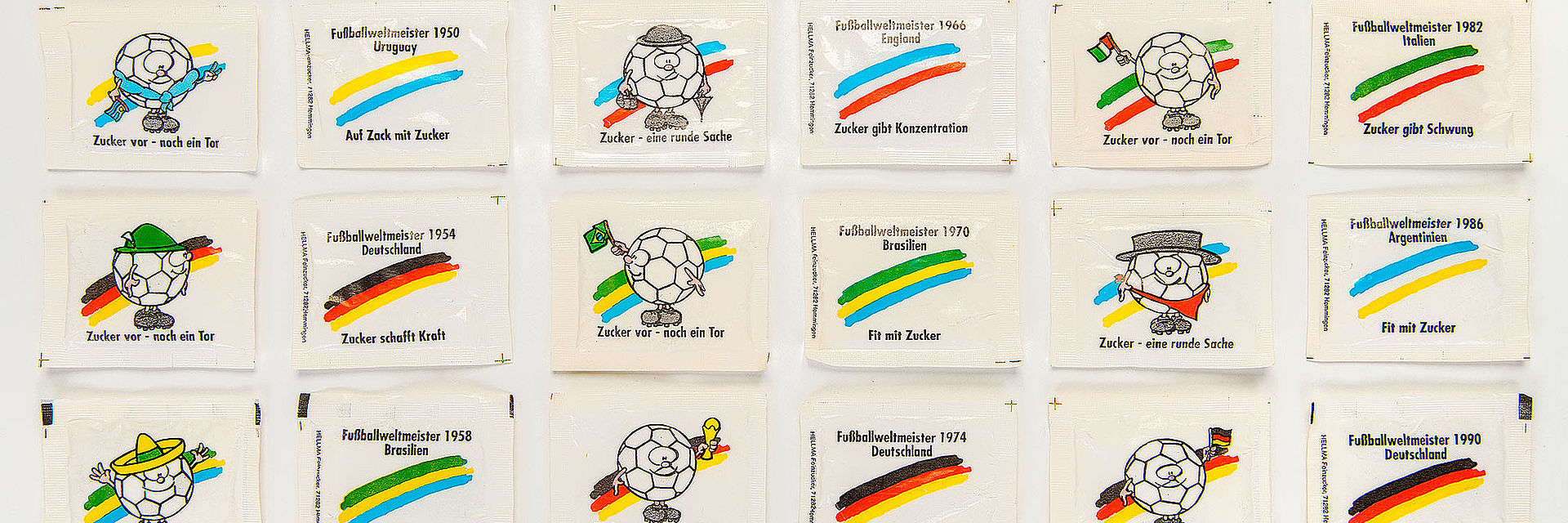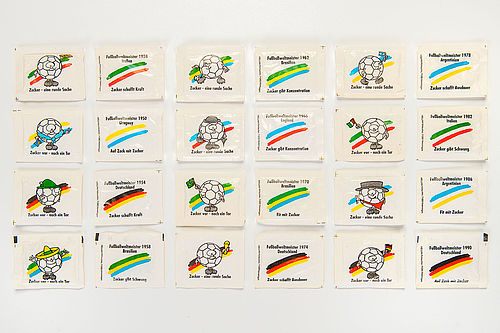
Sugar packets with World Cup Winner motifs, 1994
Object of the month June 2021

SDTB / Foto: C. Kirchner
These packets filled with granulated sugar will not just raise the heart rates of those with a sweet tooth but also the fans of international soccer. The measured sugar packets are part of a marketing campaign by the HELLMA sales company on the occasion of the 1994 FIFA World Cup in the USA. They are printed with motifs of all the World Champions between 1938 and 1990 while also proclaiming the wonders of table sugar from the perspective of sports on both sides of the packets. 190 million packets of this type were produced in 1994. Appropriately enough, the 1994 World Cup title was won by Brazil - the world's leading sugar producer!
Sugar has been an important commodity in the world economy for centuries. It should never be forgotten that - unlike the sugar packets on display here - sugar production in the past was based on the labor of enslaved people, especially in the 17th and 18th centuries. Within the system of trade being carried out between three continents, these captives became themselves quasi commodities in that they were taken by European traders in exchange for goods like cloth and beads in Africa and shipped to America. The sugar products were then transported from the Americas back to Europe. The Deutsches Technikmuseum´s permanent exhibition "Alles Zucker!" provides extensive information about this "triangular trade" as well as about everything else worth knowing about sugar.
Zucker.
